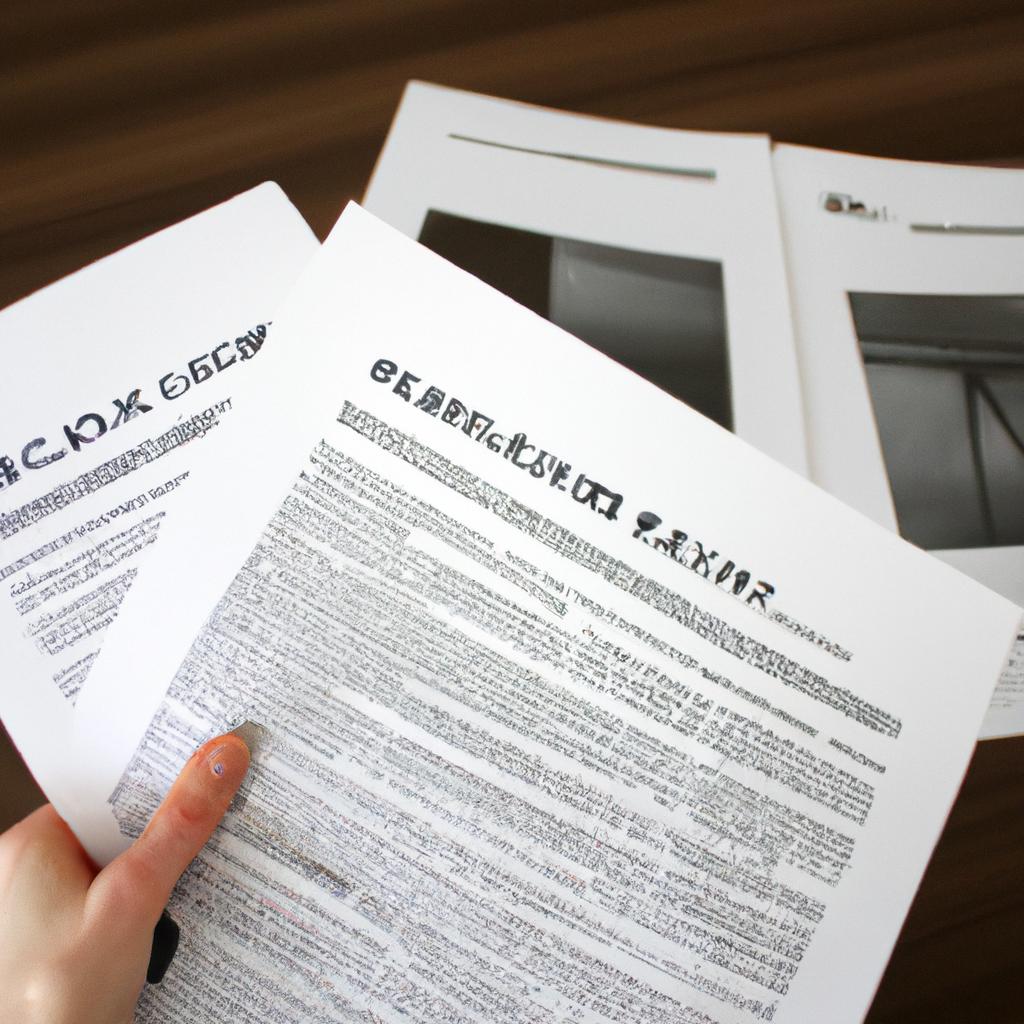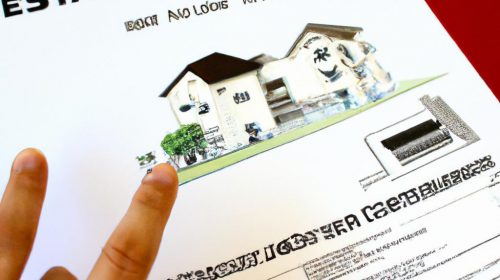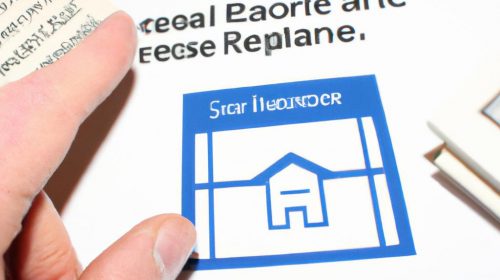Comparable Sales: Real Estate Appraisal in the Business of Real Estate
Comparable sales, also known as market comparables or simply comps, play a crucial role in the appraisal process within the business of real estate. The concept of comparable sales involves identifying and analyzing similar properties that have recently sold in a particular area to determine the value of a subject property. By examining these sales transactions, appraisers aim to establish an accurate estimate of the fair market value for residential or commercial properties. For instance, consider a hypothetical scenario where a homeowner is interested in selling their residence located in a suburban neighborhood. To ascertain an appropriate listing price, it becomes essential to compare this property with other homes that possess similar characteristics and have been sold recently.
In the realm of real estate valuation, comparable sales offer vital insights into current market trends and assist professionals in making informed decisions regarding property values. Appraisers rely on various factors when selecting suitable comps such as location, size, age, condition, amenities, and proximity to schools or transportation hubs. These carefully selected comparables provide valuable data points that help determine the fair market value for a specific property and minimize any potential bias or subjectivity associated with individual opinions. Additionally, by utilizing comparable sales analysis techniques effectively, stakeholders involved in real estate transactions can negotiate more confidently knowing they have reliable information at hand to support their pricing decisions.
Comparable sales analysis involves a systematic approach to gathering data on recent property transactions in the same neighborhood or similar areas. The selected comparable properties should have similar characteristics and be as close in proximity to the subject property as possible. By comparing factors such as size, age, condition, amenities, and location, appraisers can make adjustments to account for any differences between the comparables and the subject property.
Once the comparable sales data is collected, appraisers use various methods to determine the fair market value of the subject property. These methods include the sales comparison approach, income approach (for commercial properties), and cost approach. The sales comparison approach is commonly used for residential properties and relies heavily on analyzing comparable sales.
In addition to assisting with determining an accurate value for a property, comparable sales also provide valuable information about market trends. By analyzing recent sales prices, time on the market, and any changes in demand or supply, real estate professionals can gain insights into whether property values are increasing or decreasing in a particular area. This information can be crucial for buyers looking to make informed investment decisions or sellers trying to set an appropriate listing price.
Overall, comparable sales play a significant role in the appraisal process by providing objective data points that help determine fair market value and inform real estate decision-making.
Purpose of Comparable Sales
Purpose of Comparable Sales
The process of real estate appraisal plays a crucial role in the business of buying and selling properties. One key aspect of this process is the use of comparable sales, also known as “comps.” Comparable sales are recent transactions involving similar properties that serve as a benchmark for determining the value of a property under consideration. By analyzing these comps, appraisers can arrive at an objective estimate of a property’s market worth.
To illustrate the importance of comparable sales, consider a hypothetical scenario where an individual is looking to sell their house located in a suburban neighborhood. To determine its fair market value, an appraiser would examine recently sold houses in close proximity with similar characteristics such as size, age, condition, and location. The goal is to find homes that closely resemble the subject property in order to make accurate comparisons.
Utilizing comparable sales provides several benefits when it comes to real estate appraisal:
- Objective valuation: Comparing a property to others that have recently been sold ensures an unbiased assessment based on actual market activity rather than subjective opinions.
- Market trends analysis: Studying comps allows appraisers to identify prevailing trends within specific neighborhoods or regions, providing valuable insights into supply and demand dynamics.
- Setting realistic prices: Properly chosen comps enable sellers to set competitive listing prices that attract potential buyers while still reflecting the true value of their property.
- Negotiation leverage: Buyers armed with knowledge about recent comparable sales can negotiate from an informed position by referencing these transactions during price negotiations.
| Property | Size (sq.ft.) | Age (years) | Sale Price ($) |
|---|---|---|---|
| A | 1,500 | 10 | $300,000 |
| B | 1,800 | 5 | $350,000 |
| C | 1,550 | 8 | $320,000 |
| D | 1,650 | 12 | $290,000 |
In conclusion, comparable sales serve as a vital tool in real estate appraisal by providing objective data for estimating property values. By analyzing recently sold properties with similar characteristics to the subject property, appraisers can ensure an accurate assessment and support fair transactions. In the following section, we will explore the selection criteria used in determining which comparable sales are most suitable for analysis.
Moving forward, it is important to understand how appraisers select appropriate comps based on specific criteria. This ensures that the chosen comparables are truly representative of the subject property and provide reliable indicators of its value.
Selection Criteria for Comparable Sales
Selection Process for Comparable Sales
In the previous section, we discussed the purpose of comparable sales in real estate appraisal. Now, let’s delve into the selection criteria for choosing these comparables.
To better understand this process, consider a hypothetical scenario where you are appraising a residential property located in a suburban neighborhood. The subject property is a three-bedroom house with two bathrooms and an attached garage. In order to determine its market value accurately, it is crucial to select relevant comparable sales that closely resemble our subject property.
When selecting comparable sales, several factors should be taken into account:
- Location: One important criterion is the proximity of the comparables to the subject property. Properties within the same neighborhood or geographical area tend to have similar market conditions and buyer preferences.
- Similarity: The selected sales should possess similar characteristics to our subject property in terms of size, layout, age, condition, and amenities. For example, if our subject property has recently undergone renovations, we would seek out comparables that have also been updated.
- Timeframe: Recent sales provide more accurate indicators of current market conditions compared to older transactions. As such, it is essential to choose comparables that have sold within a reasonable timeframe from when we are conducting our appraisal.
- Sales price: Ideally, the selected comparables should have sold at prices close to what our subject property will likely sell for in the current market environment.
Consider this emotional bullet point list as an illustration:
- Accurate selection of comparables ensures fair valuations
- Avoiding overpricing or underpricing properties leads to successful transactions
- Proper analysis eliminates potential disputes between buyers and sellers
- Reliable valuation methods instill confidence among stakeholders
Now imagine a table showcasing some key details about chosen comparable sales:
| Property Address | Sale Price (USD) | Size (sq.ft) | Age (years) |
|---|---|---|---|
| 123 Main St | $350,000 | 2,000 | 10 |
| 456 Elm Ave | $365,000 | 1,800 | 15 |
| 789 Oak Dr | $340,000 | 2,100 | 5 |
| 987 Pine Ln | $355,000 | 2,050 | 12 |
In this table, we can observe the various properties’ addresses alongside their sale prices and pertinent details such as size and age. These figures aid in determining a fair market value for our subject property.
By meticulously considering these selection criteria and utilizing relevant data points like location, similarity to the subject property, recency of sales, and comparable sales prices, real estate appraisers can ensure accurate valuations that benefit all parties involved.
With an understanding of how comparables are selected established, let’s now proceed to exploring the adjustment process for these chosen sales without any further delay.
Adjustment Process for Comparable Sales
In the previous section, we discussed the importance of selecting appropriate comparable sales in the real estate appraisal process. Now, let us delve into the specific criteria used to determine which properties are truly comparable.
To illustrate this, let’s consider a hypothetical scenario where an appraiser is assessing a residential property located in a suburban neighborhood. The appraiser would typically look for recently sold properties within close proximity that share similar characteristics with the subject property. These characteristics may include:
- Location: Properties situated in the same neighborhood or area tend to have similar market conditions and buyer preferences.
- Property Type: Comparing apples to apples is crucial when determining value. Appraisers aim to find properties that are of similar type (e.g., single-family homes) and style (e.g., ranch-style).
- Size and Layout: Matching square footage, number of bedrooms, bathrooms, and overall floor plan helps ensure accurate comparisons between properties.
- Condition: Evaluating both interior and exterior condition allows for adjustments based on any differences in upkeep, maintenance, or renovations.
- Similar location creates a sense of belonging and community.
- Finding a property with matching features ensures comfort and convenience.
- A well-maintained property implies reduced future expenses.
- An accurately priced home provides peace of mind during negotiations.
Additionally, here’s an example table comparing three potential comparable sales against our hypothetical subject property:
| Property | Location | Square Footage | Bedrooms | Bathrooms |
|---|---|---|---|---|
| Subject | Suburb X | 2,000 sq ft | 3 | 2 |
| Comp Sale 1 | Suburb X | 2,100 sq ft | 3 | 2.5 |
| Comp Sale 2 | Suburb Y | 1,900 sq ft | 4 | 2 |
| Comp Sale 3 | Suburb X | 1,950 sq ft | 3 | 2 |
As we can see from the table above, Comp Sale 1 closely matches the subject property in terms of location and size but differs slightly in bathroom count. Meanwhile, Comp Sale 2 has a different location and fewer bedrooms compared to the subject property. Finally, while Comp Sale 3 shares some similarities with our subject property, it falls short in square footage.
By carefully examining these factors and using them as selection criteria for comparable sales, appraisers are better equipped to determine an accurate valuation for a given property.
Moving forward into the next section on the importance of accurate data in comparable sales analysis, we will explore how ensuring reliable information is crucial for making informed decisions in real estate appraisal.
Importance of Accurate Data in Comparable Sales
In the previous section, we discussed the importance of using comparable sales in real estate appraisal. Now, let’s delve into the adjustment process involved in determining accurate values for comparable properties.
To illustrate this process, let’s consider a hypothetical example. Imagine two houses located in the same neighborhood with similar square footage and layout. However, one house has an additional bedroom and a larger backyard compared to the other. To account for these differences, appraisers make adjustments to bring the properties’ features in line with each other.
The adjustment process typically involves identifying specific attributes or characteristics that differentiate the subject property from its comparables. These could include factors such as number of bedrooms, bathrooms, square footage, lot size, location within the neighborhood, age of construction, and overall condition. Appraisers assign values to these features based on market data and apply them as positive or negative adjustments to reach an equitable comparison between properties.
To better understand how adjustments are made, let’s explore some common considerations appraisers take into account:
- Location: Properties situated closer to amenities like schools, parks, shopping centers tend to have higher value than those farther away.
- Condition: Well-maintained homes fetch higher prices compared to properties requiring extensive repairs or renovations.
- Upgrades and Amenities: Features such as updated kitchens or bathrooms, swimming pools, or energy-efficient systems can positively impact a property’s value.
- Market Trends: The state of the current real estate market plays a crucial role in determining whether adjustments need to be made due to changing demand and supply dynamics.
Now let’s visualize this information using a table:
| Feature | Positive Adjustment (+) | Negative Adjustment (-) |
|---|---|---|
| Number of Bedrooms | +$10k | -$10k |
| Square Footage | +$50 per sq ft | -$50 per sq ft |
| Lot Size | +$5k per acre | -$5k per acre |
| Age of Construction | -$2k per year | +$2k per year |
In conclusion, the adjustment process for comparable sales is a crucial step in real estate appraisal. Appraisers carefully analyze various features and characteristics to determine fair market values by applying positive or negative adjustments. By considering factors such as location, condition, upgrades, and market trends, appraisers ensure accurate comparisons between properties.
Transitioning into the subsequent section about “Challenges in Using Comparable Sales,” it’s important to be aware of potential obstacles that can affect the accuracy of valuation assessments.
Challenges in Using Comparable Sales
Accurately determining the value of a property is crucial in real estate appraisal, as it serves as a basis for various financial transactions. One common approach used by appraisers is the analysis of comparable sales data, which involves comparing the subject property to similar properties that have recently been sold. However, this method presents its own set of challenges and limitations. This section will explore some of these challenges, highlighting the potential pitfalls that can arise when relying on comparable sales data.
Challenges Faced:
One significant challenge in utilizing comparable sales lies in ensuring the comparability between properties. While two houses may appear similar at first glance, numerous factors such as location, age, size, condition, and amenities can greatly affect their market value. For instance, consider two identical homes located side by side—one situated near a bustling city center while the other resides in a quiet suburban neighborhood. Despite being structurally alike, these properties would likely fetch significantly different prices due to variations in desirability and demand.
Furthermore, limited availability or accessibility of reliable data poses another obstacle when working with comparable sales information. Appraisers heavily rely on accurate and up-to-date records to make informed judgments about property values. Yet, obtaining comprehensive datasets can be challenging due to differences in record-keeping practices across jurisdictions or insufficient public access to certain types of information.
To further complicate matters, external factors beyond an appraiser’s control can influence housing markets unpredictably. Economic fluctuations, changes in consumer preferences, zoning regulations alterations, or even natural disasters can all impact property values considerably over time. These unforeseen circumstances highlight the need for constant monitoring and adjustment when utilizing comparable sales data.
Conclusion Transition:
Despite the inherent challenges associated with using comparable sales data effectively,
appraisers recognize its importance as a valuable tool for estimating property values accurately.
In light of these obstacles faced within the context of real estate appraisal, it becomes imperative to explore the benefits that can be derived from utilizing comparable sales. This next section will delve into the advantages of incorporating this approach into the appraisal process and shed light on its potential for enhancing accuracy and efficiency in property valuation.
Benefits of Utilizing Comparable Sales
Section: Benefits of Utilizing Comparable Sales
After exploring the challenges associated with using comparable sales in real estate appraisal, it is important to understand the significant benefits that this approach offers. By analyzing recent sale prices of similar properties in a given market, appraisers can gain valuable insights into the current value of a property under consideration. This section will discuss some key advantages of utilizing comparable sales in real estate appraisal.
One notable benefit of using comparable sales is their ability to provide objective and reliable data for determining property values. For instance, let’s consider a hypothetical case where an appraiser needs to evaluate the market value of a residential property located in a suburban neighborhood. By comparing this property with recently sold houses within the same area that have similar characteristics such as size, age, condition, and location, the appraiser can arrive at a more accurate estimate of its worth.
The following bullet point list highlights additional advantages:
- Market Transparency: Comparable sales allow for greater transparency by providing evidence-based information on recent transactions and actual selling prices.
- Improved Accuracy: Using comparable sales helps reduce subjectivity in valuation processes and provides a more precise estimate based on actual market dynamics.
- Time Efficiency: Accessible databases and tools enable quick retrieval and analysis of relevant comparables, saving time compared to other approaches.
- Enhanced Credibility: The use of documented comparable sales enhances the credibility and trustworthiness of the appraisal report.
To further illustrate the benefits mentioned above, let’s consider a table showcasing three hypothetical properties’ details along with their corresponding sale prices:
| Property | Size (sq ft) | Age (years) | Condition | Location | Sale Price ($) |
|---|---|---|---|---|---|
| A | 2,000 | 10 | Excellent | Suburban Neighborhood A | $400,000 |
| B | 2,200 | 15 | Good | Suburban Neighborhood A | $375,000 |
| C | 1,800 | 5 | Excellent | Suburban Neighborhood B | $425,000 |
From this table, it is evident that property C in a different neighborhood fetched a higher sale price than properties A and B. This information can be useful for assessing the relative desirability of various locations and their impact on property values.
In conclusion, the utilization of comparable sales offers numerous benefits in real estate appraisal. These advantages include objective data for determining property values, market transparency, improved accuracy, time efficiency, and enhanced credibility. By analyzing recent transactions and comparing properties with similar characteristics, appraisers can make more informed decisions regarding property valuation.



